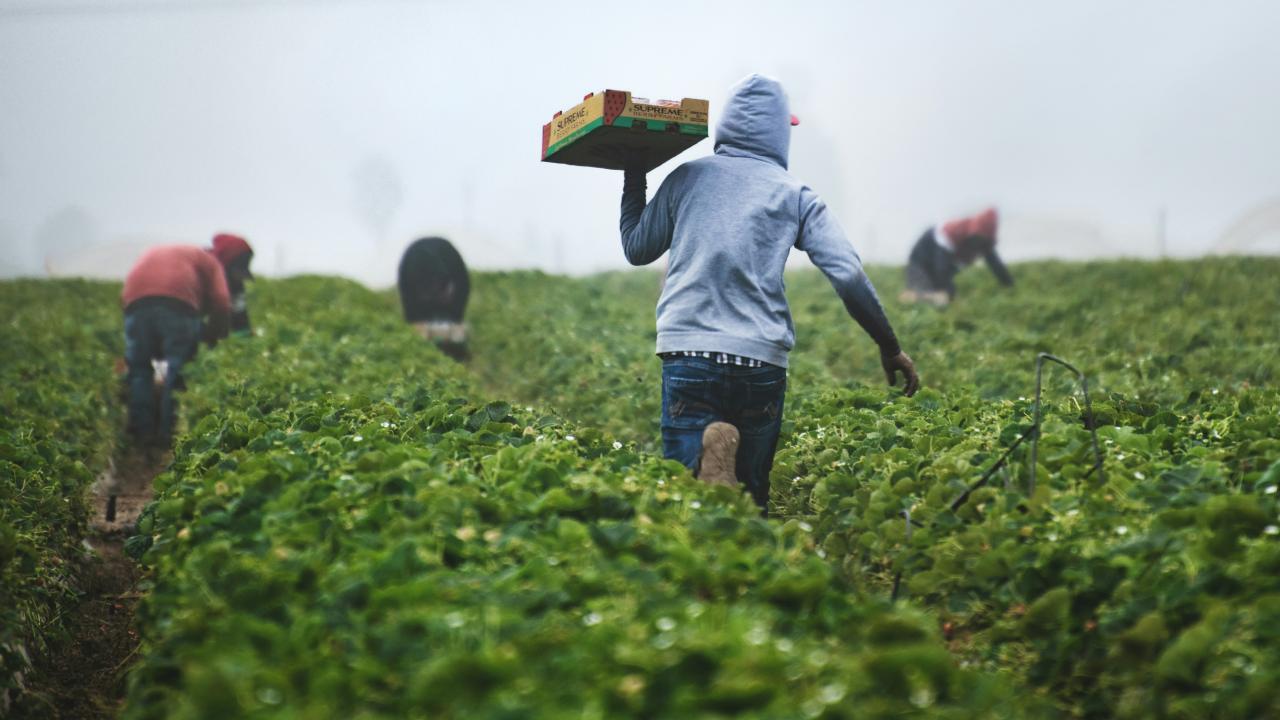
Injured on the Job? Get Back to Work: California Farmworkers’ Struggle to Access Workplace Rights and Benefits After Occupational Pesticide Exposure
This the fifth article in a series of six that highlight the Policy Clinic projects completed by EPM masters students in collaboration with our partners. We'd like to give a special thanks Ouahiba Laribi and Nancy Villasenor from the Office of Environmental Health Hazard Assessment and Carly Hyland from UC Berkeley.
There are over 400,000 farmworkers employed in the agricultural industry in California (California Employment Development Department, 2022). Despite only making up a small proportion of the total 40 million people in the state, their work is fundamental to everyone’s daily life. Farmworker labor plays an essential role in ensuring food in grocery stores and on our tables.
The significance of their work is a contrast to the difficult working conditions they face on a daily basis– strenuous tasks, poor living conditions, exposure to extreme heat, wildfire smoke, and toxic pesticides. In addition to many farmworkers being unaware of what workplace rights and benefits are legally guaranteed to them, fear of retaliation causes asking questions or speaking up to be perceived as risky (Kuang, 2024).
These environmental justice challenges are complex and multifaceted. In our project, we collaborated with CalEPA’s Office of Environmental Health Hazard Assessment (OEHHA) and UC Berkeley to research scenarios involving exposure to pesticides and the role of healthcare settings in the State rights and benefits system. OEHHA’s mission is to protect and enhance the health of Californians.
Learning about these legal systems was a complicated process. After initial research, we reached out to contacts provided to us by our clients and conducted 11 informational interviews. Through conversations with state workers, nonprofit advocates, and even a gynecologist, we gained a better understanding of the relevant benefits systems for farmworkers, including State Disability Insurance and Workers’ Compensation.
We learned from our discussions that barriers often cause farmworkers to give up on trying to access rights and benefits, leaving many to continue work without accommodations. These barriers include a lack of resources translated to Spanish and indigenous languages, understaffed helplines, a lack of interpreters, extensive identification requirements that may discourage an undocumented worker from pursuing benefits (although they are eligible), and a lengthy, complex process for filing a claim. By understanding common barriers or misconceptions about state processes, we were able to address specific topics to address in our deliverables.
We designed outreach materials to inform clinicians and patient advocates, such as administrative healthcare staff and community health workers, to share our work with people who interact with farmworkers regularly. Materials included topics on:
- Pesticide exposure prevention
- Prenatal pesticide exposure and associated government benefits
- Occupational injuries and employer compensation
We also compiled a list of recommendations for different system actors based on both our informational interviews and our own experiences learning about these rights and benefits systems.
Our group was excited about this project from the beginning because of our shared passion for public health, sustainable agriculture, and equitable food systems. To incorporate equity considerations into our work, we spent time focusing on farmworkers’ experiences. While we were unable to directly interview farmworkers, many of our interview participants work with farmworkers; some even had personal experiences of pesticide exposure themselves. We also spent time listening to podcasts, reading news articles, and watching interviews on YouTube to hear stories from farmworkers.
Overall, we identified practical solutions to assist healthcare professionals, patient advocates, and other system actors in helping farmworkers impacted by pesticide exposure to access workplace rights and benefits. We hope to bring awareness to important issues that affect this vulnerable population, and have been inspired by the work being done by community organizations and healthcare workers to address these significant challenges.
Sources
Employment Development Department. (n.d.). Agricultural employment in California. https://labormarketinfo.edd.ca.gov/data/ca-agriculture.html
Kuang, J. (2024, February 8). Is California’s workplace safety agency protecting farmworkers? Legislators want to know. CalMatters. https://calmatters.org/politics/capitol/2024/02/california-farmworkers-safety/
Deliverables
